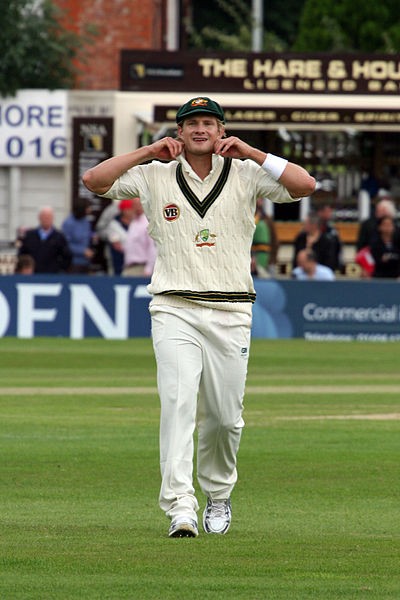As the Australian test team simultaneously celebrates, keeps playing cricket and looks forward to next month’s tour to South Africa, it’s probably best to look at the team’s most divisive batsman, Shane Watson. Batting in the vital number three position for all five tests this summer, Watson was typically average. He was sensational in the second innings in Perth and Melbourne, but looked lost in the others. Watson will always raise questions about where he should bat, having found success as an opener, but his bowling has seen him pushed to six at times. He has batted at three for 12 consecutive innings now, so should he stay there? As always in the latest Ashes, Watson looked great when he was scoring well, and awful when he was getting out. Just like with any other player, the statistics don’t take in to account his beautiful driving, or the frustrating magnetism of his front pad.
His 345 runs at 38.33 in the successful Ashes placed Watson fifth among all scorers, ahead of Steve Smith. No Englishman scored so many runs as Watson. Batting at three, Watson was often in the middle of a top order collapse, always saved by Brad Haddin. Easily forgotten however, Watson scored more runs than any Australian in the away Ashes of 2013, with 418 at 41.8. This figure was obviously helped by his brutal 176 in the final test. A quick glance of his batting record is surprising in that his 51 tests, Watson has played England a remarkable 18 times. 18 is a seriously big chunk out of 51. His record against England is good, for his standards, averaging 43.57 with two hundreds and 10 fifties. He only has a better average against Pakistan (44.1). Against South Africa, Watson has only played three matches, but has a troubling average of 21.66. In a good sign, from his six innings, Watson hasn’t shown an obvious weakness against any particular bowler.
Noticeable in Watson’s record is that he has a far worse record away from home. His home average of 41.76 is better than his overall of 36.33, and his away average is 33.67. Remarkably, Watson has split his milestones, having two hundreds and 11 fifties both at home and away. Playing better at home is no surprise, and it is no disaster to average less away from home, but an average of 33.67 for a number three is unacceptable. For comparisons sakes, Michael Clarke is also much better at home (averaging 61.9) than away (42.54) but an average of 42.54 is higher than Watson’s first class batting average. Aside from at home, Watson has done his best work in New Zealand (where he has only played one test) and England, where he averages 38.
Watson is often criticized for being out LBW, and it is a serious issue. His technique sees him planting his foot down the wicket and playing a shot around that. Watson has been out LBW 26 times and bowled a surprising 12 times. Those numbers are high (he has been caught 49 times) and indicate that he has trouble getting his bat in the way.
The biggest discussion around Watson is, if he is to play, where does he bat? Watson solidified his place in the team as an opening batsman in 2009 when he starred, averaging 65.9. Watson’s production has dropped since then, averaging 42.71 in 2010 and only getting to 35 once since, in 2013. Although he hasn’t batted as many times below three, there is a noticeable drop in production. When batting in the top three Watson averages a respectable 41.15, not an outstanding figure, but a solid and seemingly reliable one. When batting below three however, Watson averages a meager 22.7. It seems that with an overall average in the mid 30s and his all-round status that Watson should be batting around 6, but the figures suggest that Watson performs better when facing a hard ball.
Despite his indifferent batting and injuries, Watson is clearly the best all-round option for the Australian test team, but his career record isn’t good enough for an Australian number three, and he seems almost incapable of batting down the order. Perhaps with more time at number six Watson can turn it around, but how much time does he get in a team that is relying on lower order runs more than ever? The other conundrum Australia has is that Watson may be the only option to bat at three. The lower Clarke bats the better he plays and Steve Smith isn’t a top order player. With Shaun Marsh’s unbackable record and Alex Doolan’s stats suggests he might not be much of an improvement, perhaps Watson has to stay at number three. There might not be a problem if Clark wins the toss and bats though, because Watson has made all his centuries under those circumstances. Or if Graeme Swann makes a surprise return and plays for South Africa.

Reblogged this on NewsWorldCafe.